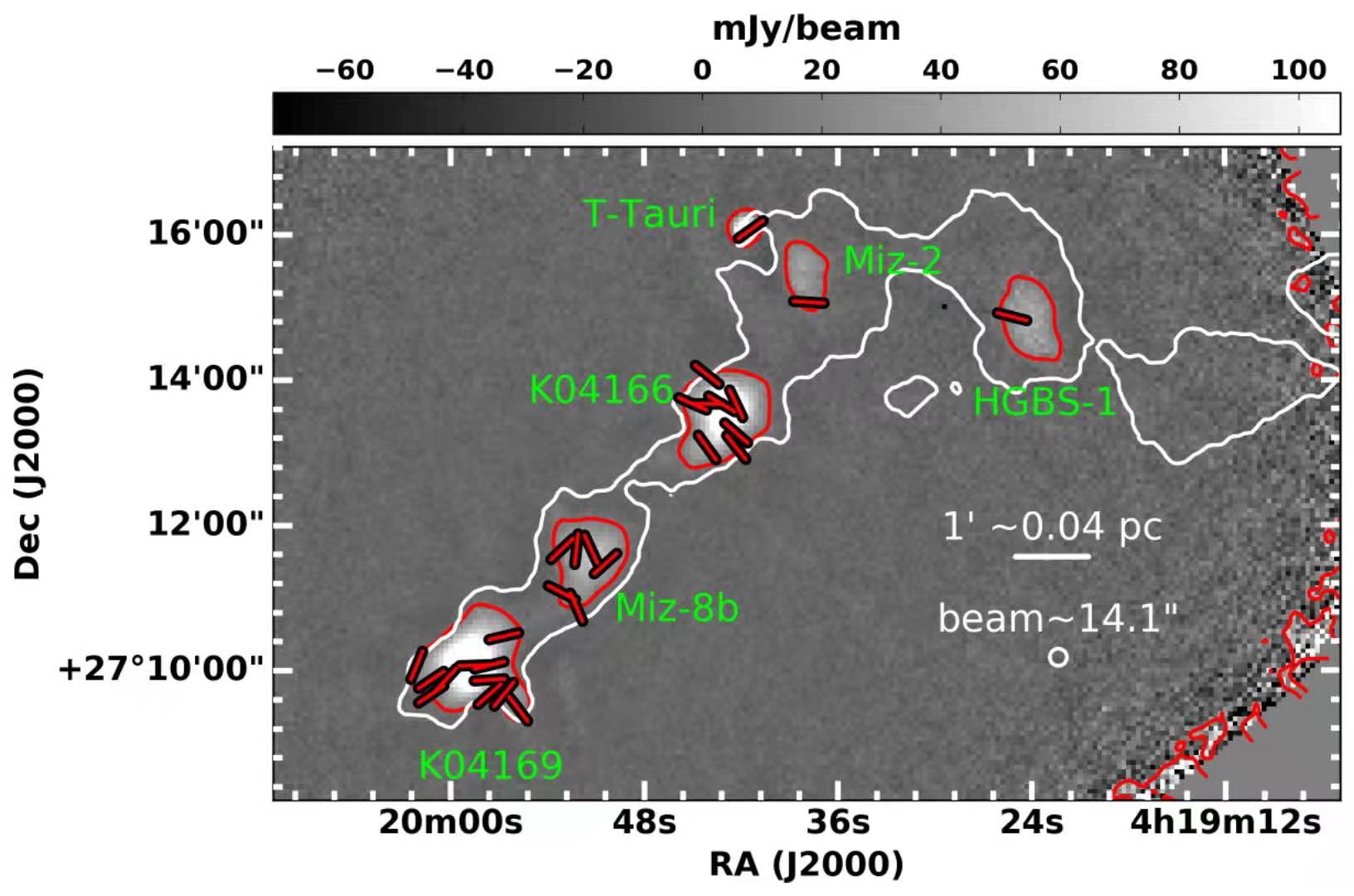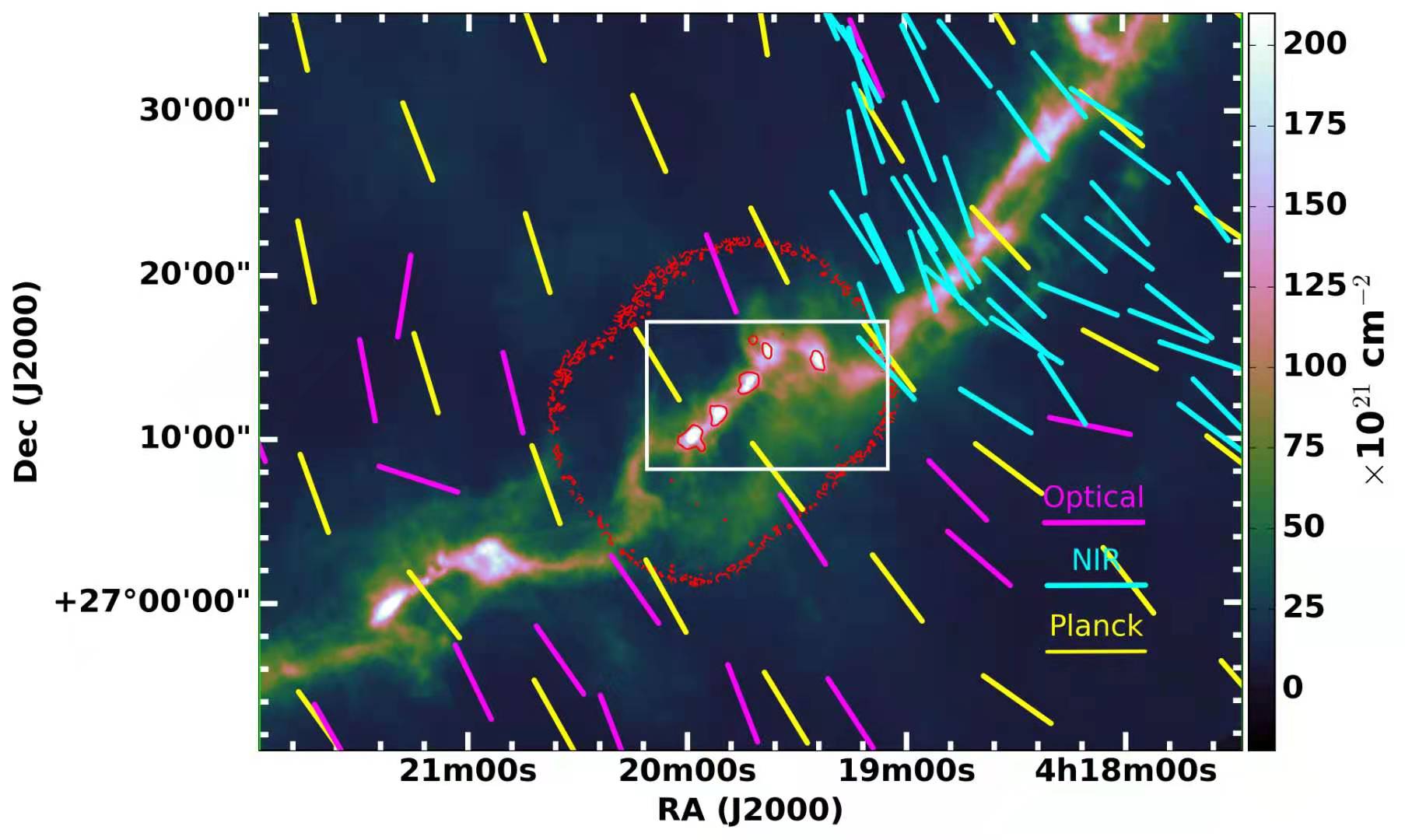
Magnetic fields are ubiquitous throughout our Milky Way Galaxy and play a crucial role in all dynamics of interstellar medium. However, questions like how solar-type stars form out of magnetized molecular clouds, whether the role of magnetic fields changes at various scales and densities of molecular clouds, and what factors can change the morphology of magnetic fields in low-mass dense cores still remain unclear.
A new study led by Dr. Eswaraiah Chakali from Prof. LI Di's research group at the National Astronomical Observatories of the Chinese Academy of Sciences (NAOC) has partially answered these questions. The study reveals the diverse magnetic field morphologies in solar-type star forming cores in the Taurus B213 region.
This study was published in The Astrophysical Journal Letters on May 10.
The researchers used high-resolution and sensitive 850-micron dust emission polarization data acquired by the James Clerk Maxwell Telescope (JCMT) using the SCUBA-2 camera along with the POL-2 polarimeter.
The observations were conducted as a part of a large international program called B-fields In STar-forming Region Observations (BISTRO).
"Although formed out of the same filamentary cloud, Taurus/B213, among the three dense cores having more polarization measurements, only one remembers the relatively uniform large-scale magnetic field threading the parental cloud," said Dr. Eswaraiah Chakali, lead author of the study.
This is in contrast to expectations based on the theory that magnetic fields regulate star formation. If a large-scale magnetic field dominates throughout cloud accumulation, core collapse and star formation, the mean position angle of the magnetic field should be similar across various spatial scales.
Further analysis of the gas velocity gradient revealed that the kinematics due to gas accretion flows onto the parental filament could have altered the magnetic field configuration.
"Even in the presence of substantial magnetic flux, local physical conditions can significantly affect magnetic field morphology and their role in star formation," said Prof. LI Di, co-corresponding author of the study.
"Our current observations represent one of the deepest sub-millimeter polarimetry images ever taken using a single dish telescope toward a Galactic region," said Prof. QIU Keping of Nanjing University, co-PI of the BISTRO project and a coauthor of the study.
Prof. LI Di also highlighted "more comprehensive analyses, in combination with Planck data and stellar polarimetry, may give more insights into the evolution of magnetic fields in this stereotypical low-mass star-forming region."

Fig. 1 Core-scale magnetic fields (red segments) inferred using high-resolution and sensitive dust emission polarization observations using JCMT. The Solar-type star forming cores fragmented out of B213 filament are shown. (Image by Eswaraiah Chakali, et al. 2021)

Fig. 2 Large-scale, uniform magnetic field morphology of Taurus/B213 region, inferred based on multi-wavelength polarization data. The extent of Fig. 1 is marked with a white box. (Image by Eswaraiah Chakali, et al. 2021)

86-10-68597521 (day)
86-10-68597289 (night)

86-10-68511095 (day)
86-10-68512458 (night)

cas_en@cas.cn

52 Sanlihe Rd., Xicheng District,
Beijing, China (100864)

